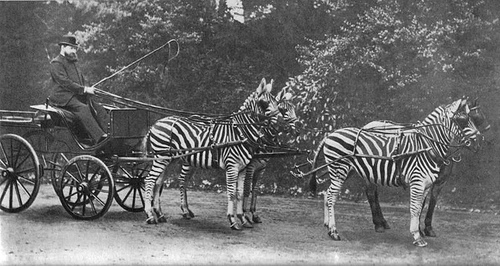While lecturing at Oxford, geologist William Buckland kept a bear named Tiglath Pileser. (Buckland was a lunatic.) In 1847 he dressed “Tig” in a cap and gown and took him to the annual meeting of the British Association and to a garden party at the Botanic Gardens. “The bear sucked all our hands and was very caressing,” remembered Charles Lyell. Eventually banished from Christ Church, Tig retired to Islip, where he terrorized the local sweetshop owner until he was sent to the Zoological Gardens.
Byron kept a bear in his chambers at Cambridge — because, he said, Trinity rules forbade dogs. “I had a great hatred of college rules, and contempt for academical honors.” It’s said he conducted it there in a stagecoach (as “Lord Byron and Mr. Bruin”) to sit for a fellowship.
“There was, by the by, rather a witty satire founded on my bear,” Byron later remembered. “A friend of Shelley’s made an ourang-outang (Oran Hanton, Esq.) the hero of a novel (‘Melincourt’), had him created a baronet, and returned for the borough of One Vote.”




